Trees, Shrubs and Woody Vines
Media

Species Types
Scientific Name
Cornus alternifolia
Description
Dogwoods usually have leaves arranged opposite one another on the stem, except for the alternate-leaved dogwood! This shrub or small tree is a popular ornamental, especially in the northern parts of Missouri, where it can be too cold to grow flowering dogwood.
Media

Species Types
Scientific Name
Cornus spp.
Description
Missouri’s five species of dogwoods are shrubs or small trees with distinctive flowers, fruits, and bark. The fruits may be red, white, or blue. The leaves have characteristic arching veins.
Media

Species Types
Scientific Name
Fagus grandifolia
Description
Limited in our state to well-drained, sandy soils in southeast Missouri, American beech is an impressive tree that has provided Americans with wood for a variety of uses, from furniture to toys to fuel to beer barrels!
Media
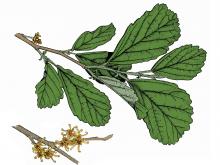
Species Types
Scientific Name
Hamamelis vernalis
Description
Ozark witch-hazel is a large native shrub that grows along dry, rocky streambeds in southern and east-central Missouri. The yellow, ribbonlike flowers bloom as early as January. In the fall, the seeds are ejected forcefully, to a distance of up to 30 feet!
Media
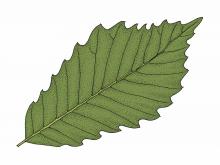
Species Types
Scientific Name
Quercus muehlenbergii
Description
Chinkapin oak is fairly easy to identify because of its distinctively toothed leaves. Look for it growing in rocky soils derived from limestone or dolomite on bluffs and in upland woods, and in floodplain forests and lower slopes along streams.
Media
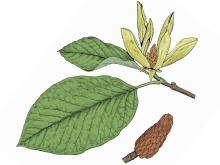
Species Types
Scientific Name
Magnolia acuminata
Description
Cucumber magnolia is an impressive, large, broad-spreading shade tree native to southern Missouri. It is often cultivated in the eastern United States because, compared to more southern magnolias, it is relatively cold-hardy.
Media
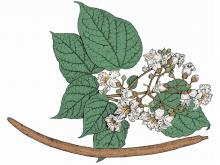
Species Types
Scientific Name
Catalpa speciosa
Description
Of the three species of catalpas in our state, northern catalpa is the only one native to Missouri (specifically, the Bootheel region). It has been planted widely, though, and has naturalized in many places. A popular ornamental and shade tree with pretty, orchidlike flowers and long, beanlike fruit.
Media

Species Types
Scientific Name
Cephalanthus occidentalis
Description
White flowers clustered in round balls give buttonbush its name. It's always found near water, and thickets of buttonbush help protect lakeshores from wave action. This shrub is also planted as an ornamental.
Media
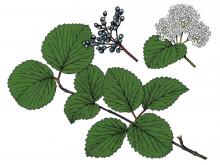
Species Types
Scientific Name
Viburnum dentatum
Description
Arrowwood viburnum is a lovely but critically imperiled Missouri shrub, but the white flower clusters and dark blue berries make it a great choice for landscaping.
Media

Species Types
Scientific Name
Cornus foemina
Description
Gray dogwood is a deciduous, thicket-forming shrub. Its small, creamy-white flowers occur in branched clusters, and its white or pale blue fruits are supported by red stalks — a characteristic that makes it attractive for ornamental uses.
See Also
About Trees, Shrubs and Woody Vines in Missouri
There are no sharp dividing lines between trees, shrubs, and woody vines, or even between woody and nonwoody plants. “Wood” is a type of tissue made of cellulose and lignin that many plants develop as they mature — whether they are “woody” or not. Trees are woody plants over 13 feet tall with a single trunk. Shrubs are less than 13 feet tall, with multiple stems. Vines require support or else sprawl over the ground.





















